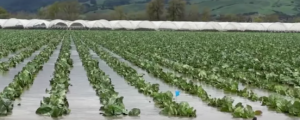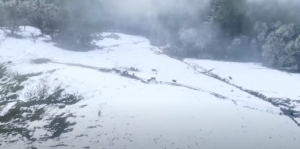Widespread flooding across the nation’s number one agriculture state will be costly — and farmers are saying that it will take months to recover.
Heavy rains and snowmelt caused the overfilled rivers to flood in many communities, soaking citrus groves and covering farmland in water, mud, and debris.
As a result of flooding, dairy farmers are having to evacuate cattle. Fields are not only saturated, but inaccessible. Citrus groves are covered in water, mud, and debris, and leafy green farmers are having to consider the process for testing for pathogens in their fields after the waters recede.
On March 10, President Joe Biden declared a state of emergency in California for 43 counties. But, with storms continuing through the month, what has been the effect of these storms?
Tulare County impacts
Zack Stuller, a Tulare County farm manager, told the California Farm Bureau that responding to flooding has been a countywide effort to plug holes in streambanks, remove debris and monitor for any emerging problems.
“We rounded up as many dump trucks as we could, and as many guys with dozers and excavators, and we worked 24 hours straight,” Stuller said. “We got permission and put Yokohl Creek back together ourselves.”
Tulare County dairy and citrus farmer Tom Barcellos, who runs an excavation business, told California Farm Bureau that he had three excavators and a backhoe operating nonstop. The flooding “is in excess of what all of these rivers can handle,” he said.
“The challenge is on the creeks that have no control structure. They’re going to run until they slow down and that means that they’re going to run for a while, and wherever they’re broke out, good luck, because there’s no stopping it,” Barcellos said. “It’s not just here, it’s Fresno County, Madera County, Kern County — there’s just water everywhere.”
Reservoirs are at capacity, and facility managers are planning to release water through dam spillways to make room for more water.
And while planting and growing cycles are certainly interrupted for crop farmers, cattle are also having to be evacuated from dairies hit by floodwater from the Tule River. Feed supplies in the Northern part of the state have also been impacted.
Meanwhile, California Farm Bureau reports that citrus groves are being impacted by a considerable amount of debris — porta-potties, logs, mud, and orange groves with up to five feet of silt.
»Related: California farmers sacrifice pickup trucks to combat flooding
Monterey County flooding affects leafy green farmers
Monterey County Farm Bureau Executive Director Norm Groot said he expects agricultural damage to exceed the $336 million caused by storms that hit the region in January, affecting 15,705 acres.
“There will be more crop losses as areas that have not experienced flooding now are experiencing it for the first time,” Groot said.
Even after the water recedes, farmers may not be able to return to production. The California Leafy Greens Marketing Agreement requires that farmers follow protocol to test for pathogens in the fields. And, planting schedules set for March have already been delayed.
The California Strawberry Commission said, “Our farming communities will face a massive cleanup before they can even begin the process of preparing the fields again and starting over.”

Humboldt County storms impact cattle
Earlier this month, starving cattle stranded in deep snow in Humboldt County received drops of hay from county, local, and regional partners by helicopters. “Operation Hay Drop” was facilitated by the Governor’s Office of Emergency Services, CalFire and the U.S. Coast Guard assisting more than 2,000 cattle in Humbold, Mendocino, and Trinity Counties.
“We have about 30 ranchers that have reached out to us for assistance,” said Diana Totten, the Southern Humbold-Area fire chief.
Soldiers with Cal Guard’s 40th CAB aid @CAL_FIRE and @Cal_OES in delivering hay to stranded cattle in Humboldt County yesterday. #bovinebailout #alwaysreadywaysthere pic.twitter.com/cKJEXHAuXg
— The California National Guard (@CalGuard) March 9, 2023
Although the hay drops have provided sustenance to get cattle through, loss numbers won’t be reported until later this year after snows thaw. Additionally, a rancher in Plumas and Sierra counties reported that he will likely have to continue purchasing hay after frigid temperatures have stunted forage growth.

Wet season provides water recharges
Government agencies, water district officials, farmers, and nonprofits are eyeballing water capture to replenish groundwater supplies by flooding fields and allowing the water to seep back into the ground.
The Tulare Irrigation District, for example, has doubled the amount of water that it can divert thanks to farmers willing to use the moisture to groundwater recharge their fields.
Other locations can help fill the gap and mitigate a price impact. Center for Farmworker Families – need overwhelming. The drought impacted workers — less fields to work and less places to live.


